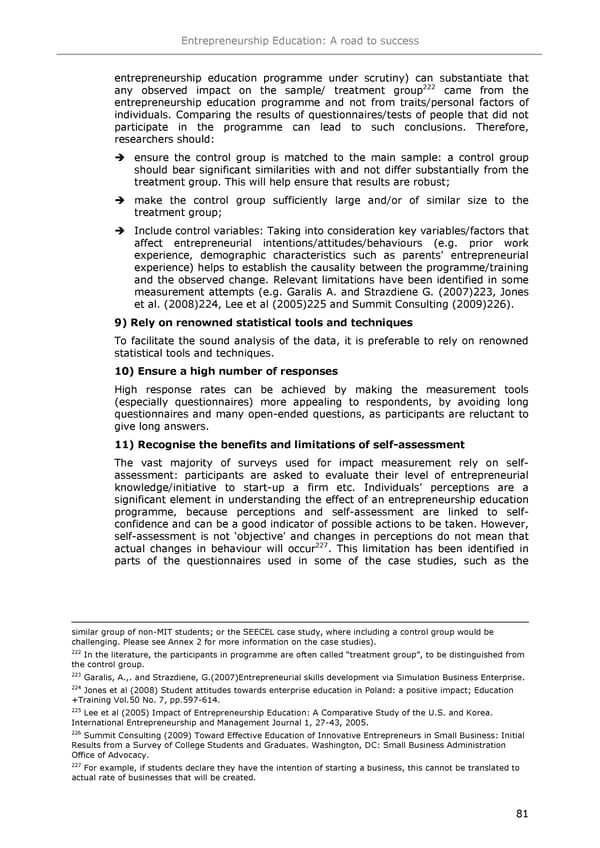Entrepreneurship Education: A road to success entrepreneurship education programme under scrutiny) can substantiate that 222 any observed impact on the sample/ treatment group came from the entrepreneurship education programme and not from traits/personal factors of individuals. Comparing the results of questionnaires/tests of people that did not participate in the programme can lead to such conclusions. Therefore, researchers should: ensure the control group is matched to the main sample: a control group should bear significant similarities with and not differ substantially from the treatment group. This will help ensure that results are robust; make the control group sufficiently large and/or of similar size to the treatment group; Include control variables: Taking into consideration key variables/factors that affect entrepreneurial intentions/attitudes/behaviours (e.g. prior work experience, demographic characteristics such as parents9 entrepreneurial experience) helps to establish the causality between the programme/training and the observed change. Relevant limitations have been identified in some measurement attempts (e.g. Garalis A. and Strazdiene G. (2007)223, Jones et al. (2008)224, Lee et al (2005)225 and Summit Consulting (2009)226). 9) Rely on renowned statistical tools and techniques To facilitate the sound analysis of the data, it is preferable to rely on renowned statistical tools and techniques. 10) Ensure a high number of responses High response rates can be achieved by making the measurement tools (especially questionnaires) more appealing to respondents, by avoiding long questionnaires and many open-ended questions, as participants are reluctant to give long answers. 11) Recognise the benefits and limitations of self-assessment The vast majority of surveys used for impact measurement rely on self- assessment: participants are asked to evaluate their level of entrepreneurial knowledge/initiative to start-up a firm etc. Individuals9 perceptions are a significant element in understanding the effect of an entrepreneurship education programme, because perceptions and self-assessment are linked to self- confidence and can be a good indicator of possible actions to be taken. However, self-assessment is not 8objective9 and changes in perceptions do not mean that 227 actual changes in behaviour will occur . This limitation has been identified in parts of the questionnaires used in some of the case studies, such as the similar group of non-MIT students; or the SEECEL case study, where including a control group would be challenging. Please see Annex 2 for more information on the case studies). 222 In the literature, the participants in programme are often called
 Entrepreneurship Education Page 84 Page 86
Entrepreneurship Education Page 84 Page 86